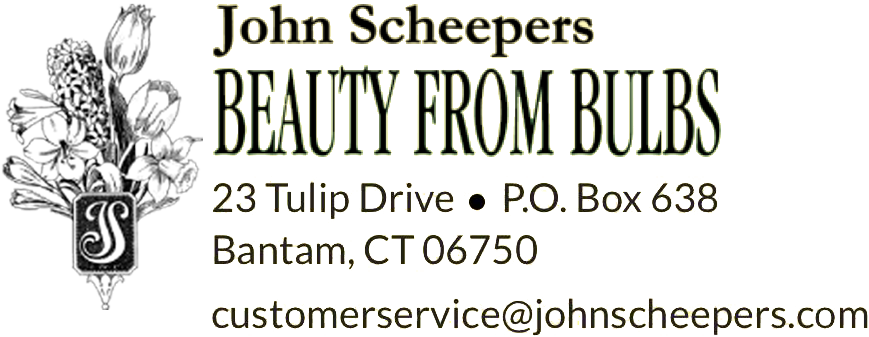-
- 20%-Off Website Specials
- New for 2024!
- Tulips
- Narcissi
- Allium
- Anemone blanda
- Brodiaea
- Camassia
- Chionodoxa
- Corydalis
- Crocus
- Eranthis
- Eremurus
- Erythronium
- Fritillaria
- Galanthus
- Geranium
- Gladiolus
- Hyacinths
- Hyacinthoides
- Ipheion uniflorum
- Dutch Iris
- Rock Garden Iris
- Ixiolirion
- Leucojum Aestivum
- Muscari
- Ornithogalum
- Oxalis
- Puschkinia
- Scilla
- Lilies
- Peonies
- Tender Bulbs
- Anemone Giants
- Tecolote Ranunculus
- Freesias
- Paperwhites
- Amaryllis
Scilla bifolia
New! A good naturalizer, the Alpine Squill has trusses of star-shaped, bright blue-lilac florets with paler centers and strappy foliage. Meaning ‘twin-leafed’, bifolia dates back to 1568. It’s a lovely addition to rock gardens, woodlands and garden borders. Generally referred to as Wood Squill, deer- and rodent-resistant Scilla naturalize readily in areas of light shade or dappled sunlight. When it’s really happy where planted, it can naturalize by both bulb offsets (baby bulbs on the sides of the mother bulb you’ve planted) and self-sowing seed. You’ll need about nine bulbs per square foot. (Square footage is determined multiplying the planting site’s length times its width.) In woodland settings, you can also scatter-plant the bulbs for a more natural look.
Bulb size: 8 cm/up. Full to partial sunlight. Bloom time in horticultural zone 5: early spring. Plant 5" deep and 4" to 6" apart. HZ: 4-8. Height: 4" to 5". (Scilla are also good for forcing indoors over the winter. Pot them up in mid-October and precool them at a consistent, dark 38° to 45°F for six to eight weeks with moderate watering. Bring them into the house~they will bloom about two to four weeks later.)
Scilla are The Art & Soul of Spring.
Scilla Horticultural Tips Stinze Plantings
Scilla are The Art & Soul of Spring.
Scilla Horticultural Tips Stinze Plantings
- Information
Miscellaneous Narcissi
Not to be overlooked, these varieties are in their own little group because they don't quite fit into any of the R.H.S. divisions.
All Narcissi tolerate a wide range of sunlight from full sun to semi-shade. Varieties with pink cups should be grown in areas of filtered sunlight. Narcissi prefer well-draining soil, hate to get wet feet and love to be fed with a 4-10-6 or 5-10-5 granular organic flower bulb fertilizer three times a year. Allow the foliage to thrive and die back naturally without braiding or premature removal. Bulb size: 12/14 cm, unless otherwise noted. Bloom time in a horticultural zone 5: March/April. Plant 6" deep and 6" apart. Horticultural zones 5-8. Height: 6" to 14", depending upon variety. Narcissus classification: Royal Horticultural Society Division 12.
Narcissi are The Art & Soul of Spring.
Narcissus Horticultural Tips Narcissus Forcing Tips
Miscellaneous Narcissi
Not to be overlooked, these varieties are in their own little group because they don't quite fit into any of the R.H.S. divisions.
All Narcissi tolerate a wide range of sunlight from full sun to semi-shade. Varieties with pink cups should be grown in areas of filtered sunlight. Narcissi prefer well-draining soil, hate to get wet feet and love to be fed with a 4-10-6 or 5-10-5 granular organic flower bulb fertilizer three times a year. Allow the foliage to thrive and die back naturally without braiding or premature removal. Bulb size: 12/14 cm, unless otherwise noted. Bloom time in a horticultural zone 5: March/April. Plant 6" deep and 6" apart. Horticultural zones 5-8. Height: 6" to 14", depending upon variety. Narcissus classification: Royal Horticultural Society Division 12.
Narcissi are The Art & Soul of Spring.
Narcissus Horticultural Tips Narcissus Forcing Tips





